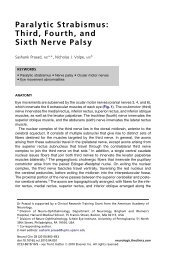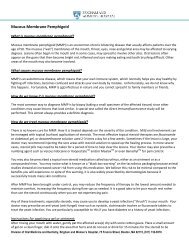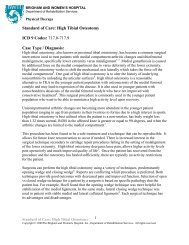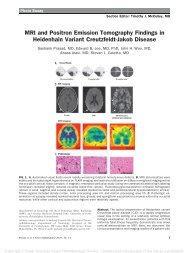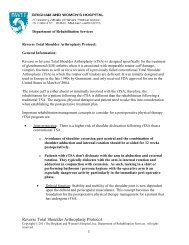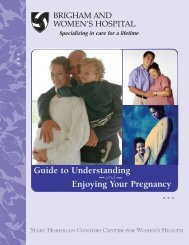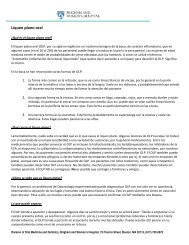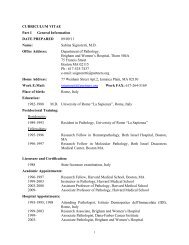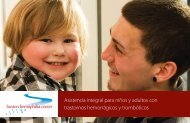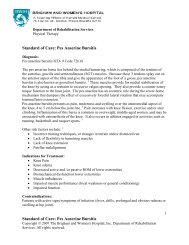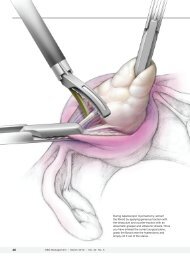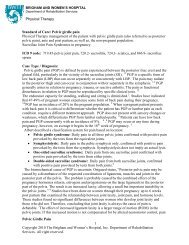Reverse TSA with LDTT Protocol - Brigham and Women's Hospital
Reverse TSA with LDTT Protocol - Brigham and Women's Hospital
Reverse TSA with LDTT Protocol - Brigham and Women's Hospital
Create successful ePaper yourself
Turn your PDF publications into a flip-book with our unique Google optimized e-Paper software.
Department of Rehabilitation Services<br />
Goals:<br />
• Continue progression of PROM (full PROM is not expected).<br />
• Gradually restore AROM.<br />
• Facilitate latissimus dorsi to function as a humeral head stabilizer <strong>and</strong> external rotator.<br />
• Control pain <strong>and</strong> inflammation.<br />
• Allow continued healing of soft tissue / do not overstress healing tissue.<br />
• Re-establish dynamic shoulder <strong>and</strong> scapular stability.<br />
Precautions:<br />
• If the patient was in a gunslinger they are weaned out of it into <strong>and</strong> ER sling at post-op<br />
week # 6. Goal is to be weaned out of sling by post-op week # 8 if adequate shoulder<br />
motor control (i.e. negative ER lag sign <strong>and</strong> the ability to actively elevate shoulder at<br />
least 50 degrees <strong>with</strong>out pain.)<br />
• No forced shoulder ROM<br />
• Restrict lifting of objects to no heavier than a coffee cup.<br />
• No supporting of body weight by involved upper extremity.<br />
Week 6 to Week 8:<br />
• Continue <strong>with</strong> PROM program.<br />
o At 6 weeks post op start PROM IR to tolerance (not to exceed 30 degrees) in the<br />
scapular plane.<br />
• Begin Active assisted range of motion (AAROM) <strong>and</strong> AROM (Begin in supine <strong>and</strong><br />
sidelying then progress to antigravity positions as appropriate)<br />
• Forward Flexion (lawn chair progression) *<br />
• Forward elevation *<br />
• External Rotation *<br />
• Internal Rotation<br />
*Use of a biofeedback is helpful for visual <strong>and</strong> auditory feedback to re-<br />
educate the Latissimus muscle to function as an external rotator.<br />
Neuromuscular electrical stimulation (NMES) is useful to assist in muscular<br />
recruitment as well.<br />
• Initiate gentle scapulothoracic rhythmic stabilization <strong>and</strong> alternating isometrics in<br />
supine as appropriate. Begin gentle periscapular <strong>and</strong> deltoid sub-maximal pain<br />
free isotonic strengthening exercises, typically toward the end of the 8<br />
<strong>Reverse</strong> Total Shoulder Arthroplasty <strong>with</strong> Latissimus dorsi tendon transfer <strong>Protocol</strong><br />
Copyright © 2008 The <strong>Brigham</strong> <strong>and</strong> <strong>Women's</strong> <strong>Hospital</strong>, Inc. Department of Rehabilitation Services. All rights<br />
reserved.<br />
7<br />
th week.<br />
• Progress strengthening of elbow, wrist, <strong>and</strong> h<strong>and</strong>.<br />
• Gentle glenohumeral <strong>and</strong> scapulothoracic joint mobilizations as indicated (Grade<br />
I <strong>and</strong> II).



